Abstract
The analysis of age-prevalence curves obtained from bilharziasis surveys is not usually carried out to the maximum depth the data allow for. With a view to obtaining greater value from the available information, the author analyses age-prevalence data for three common human schistosomes by Muench's catalytic models. The two-stage model is found the most appropriate. Use of this model assumes constant rates of becoming positive and of becoming negative. Two separate analyses are required, one for the first few years of life of the human host and one for the remainder. Satisfactory fits to the data are obtained only when the proportion of older people who remain positive is determined. This proportion varies with the intensity of transmission.
The calculated rates of becoming positive agree very well with rates obtained by observing originally negative children for 12 months or longer.
The parameters in the model are used in interpreting data from skin-test surveys. It is concluded tentatively that in order to be positive by the skin test, a person must have had both sexes of worms at some time in the past and to be carrying living female worms or to have been exposed recently to female cercariae.
It may become possible to use the model to predict the entire age-prevalence curve from data on children, thus saving much effort in parasitological surveys.
Full text
PDF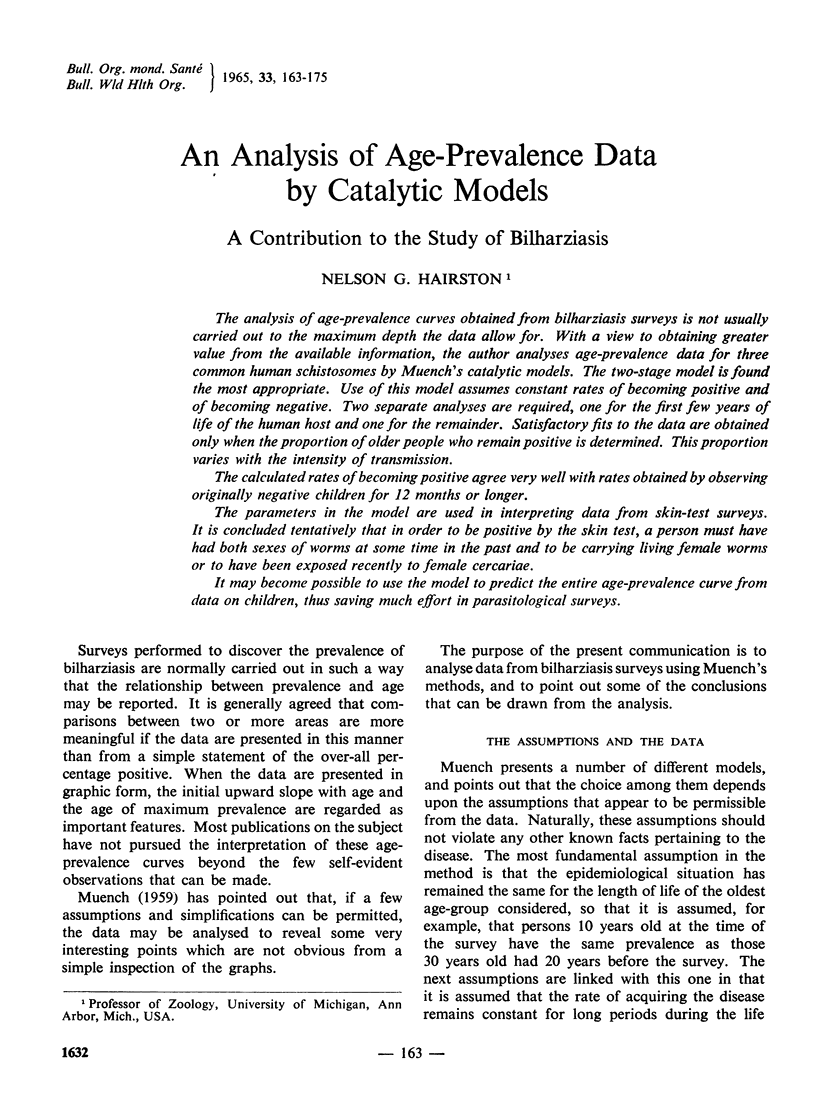
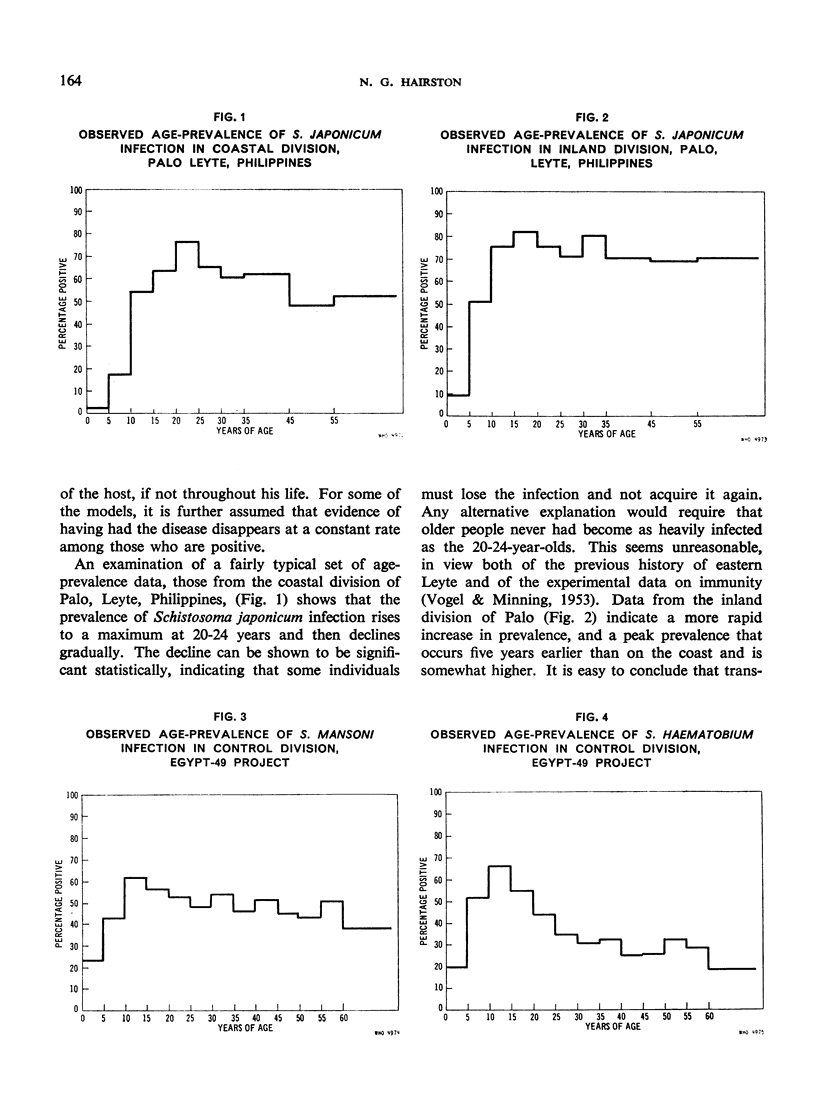
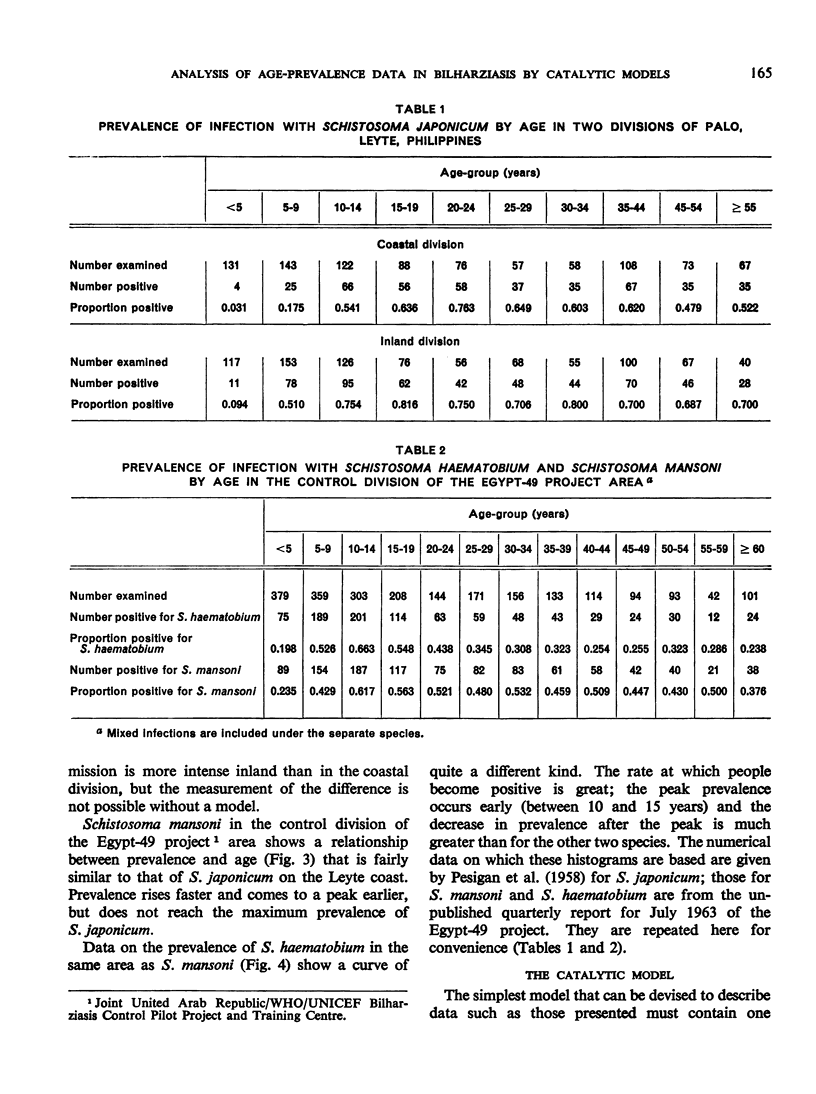

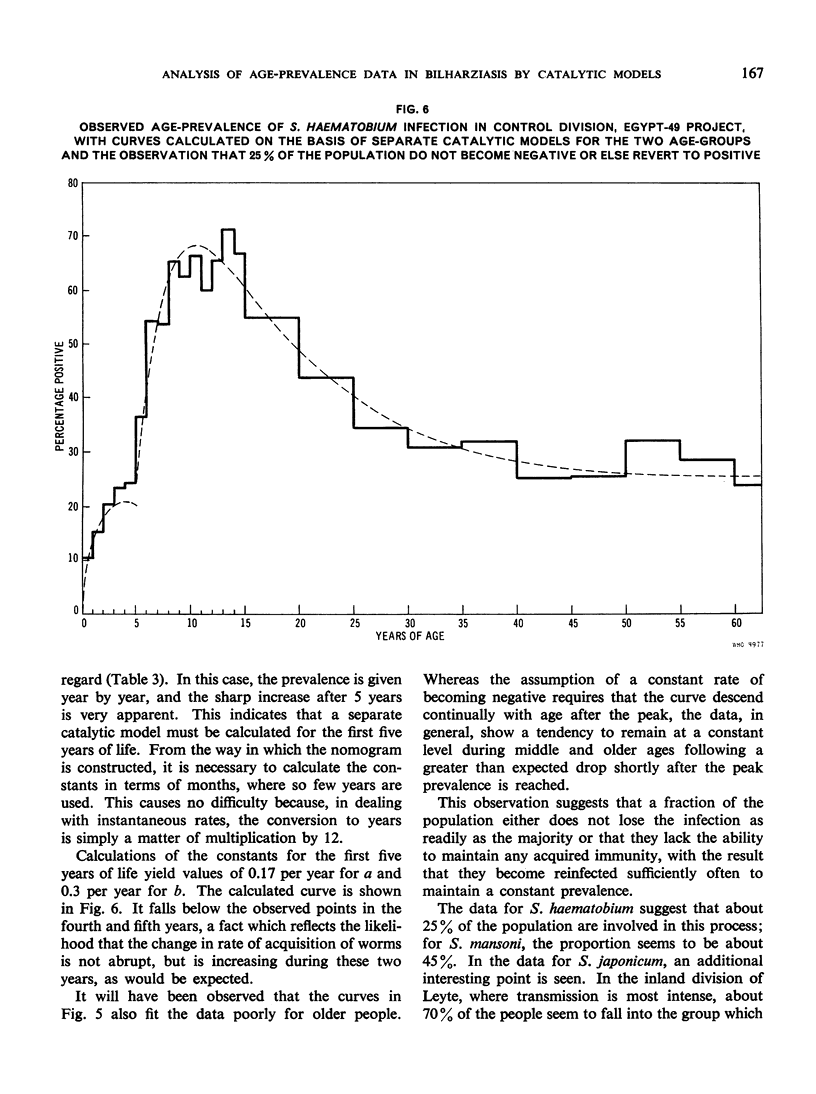
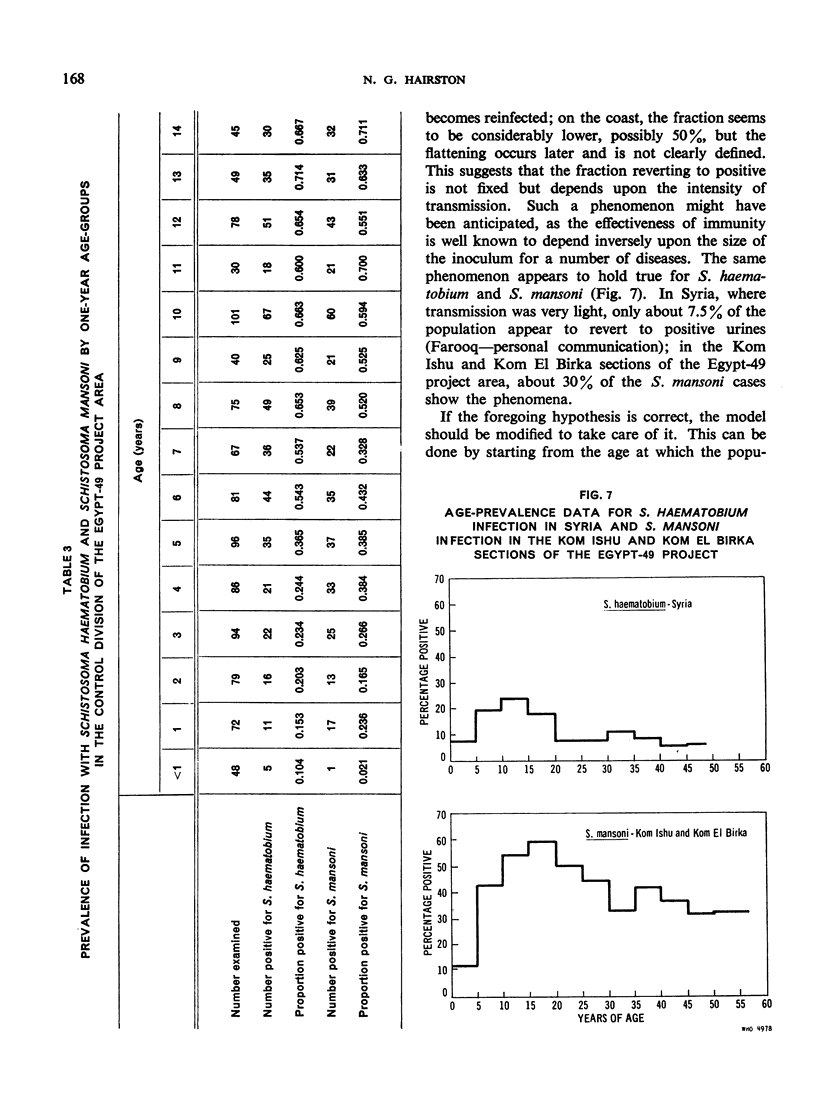
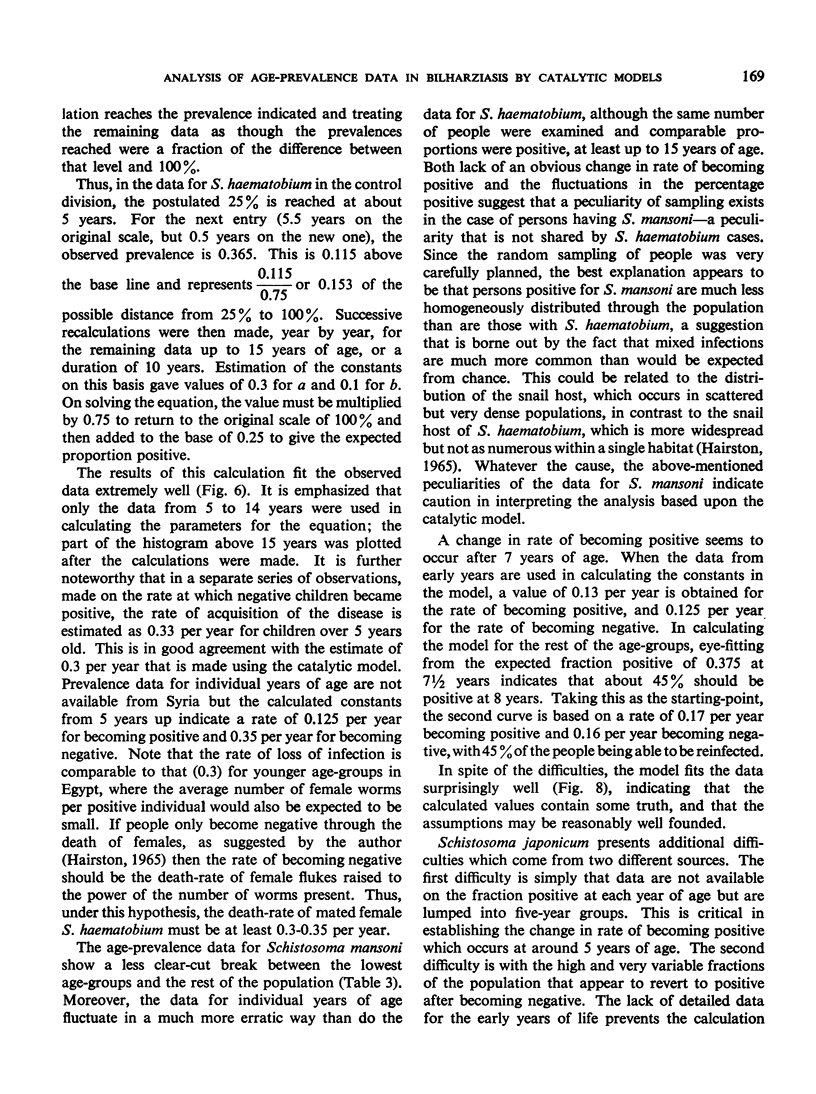
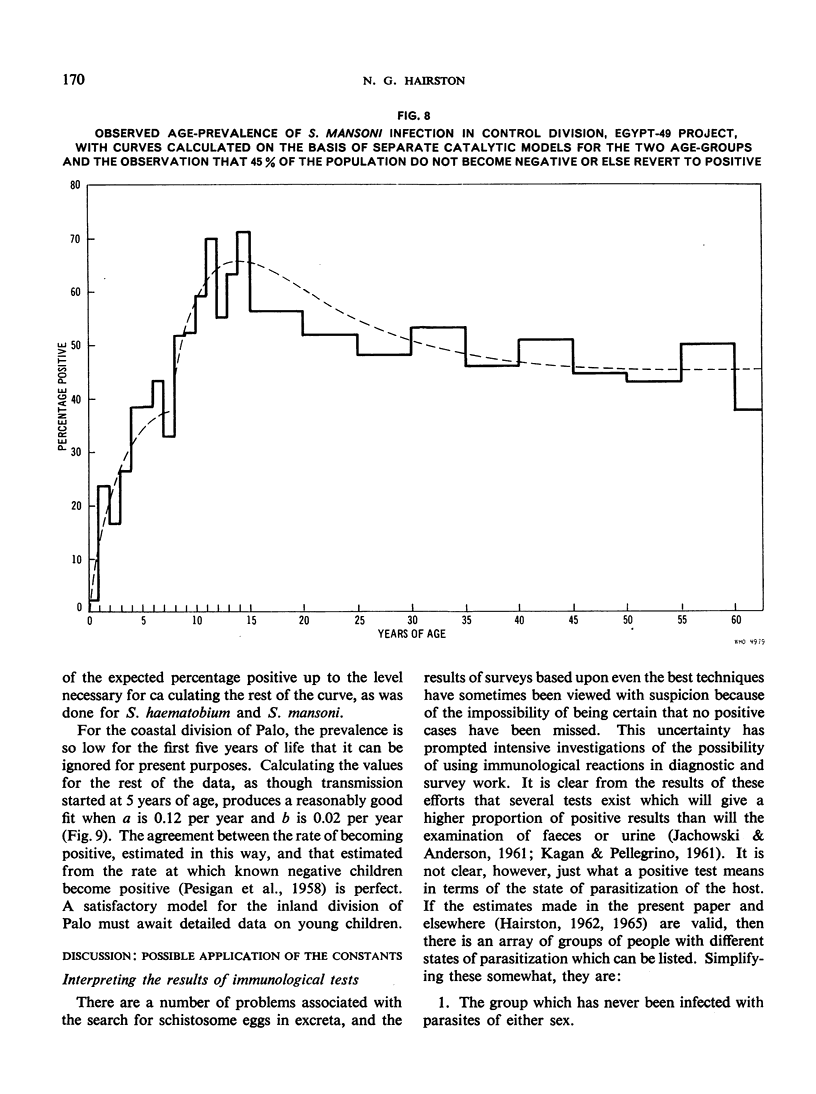
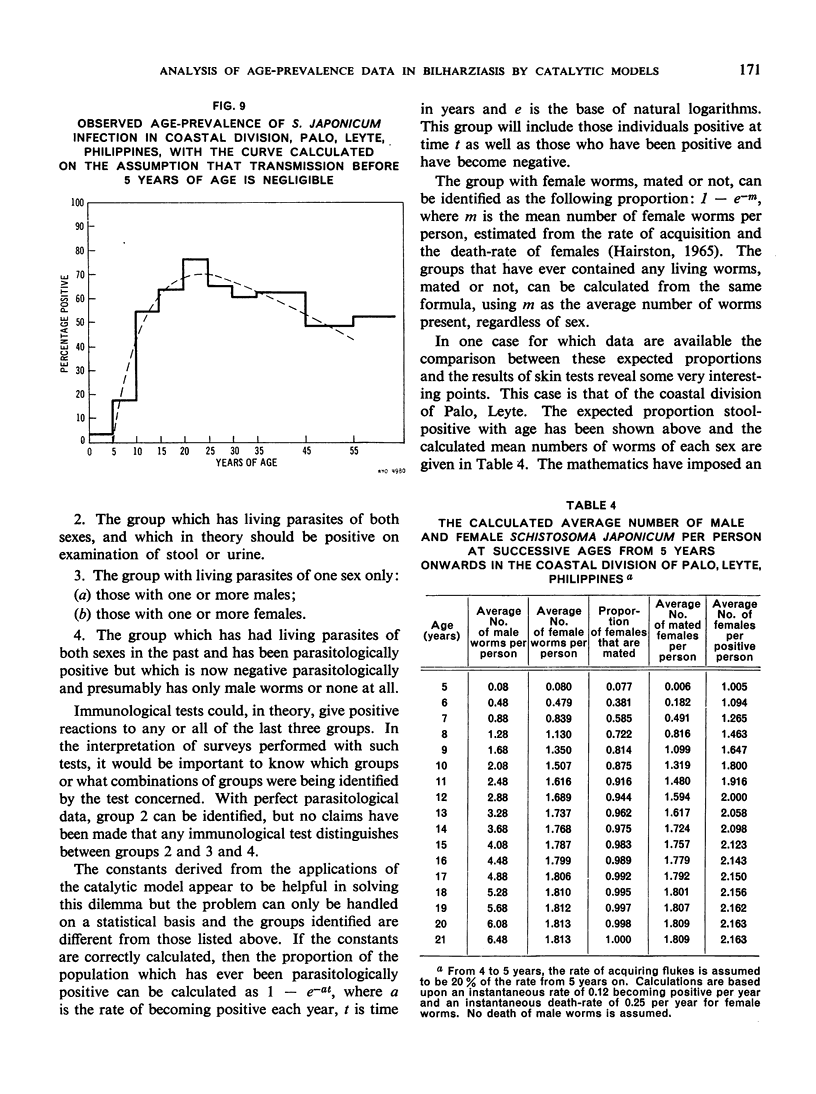
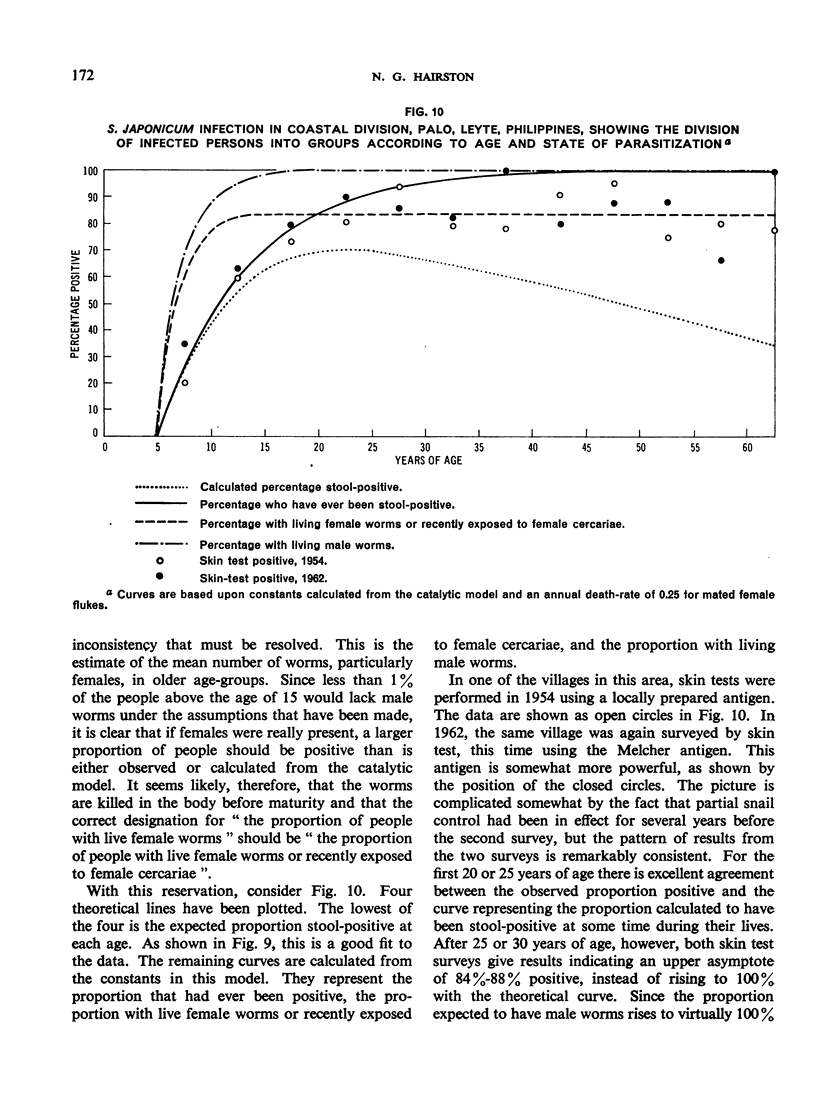
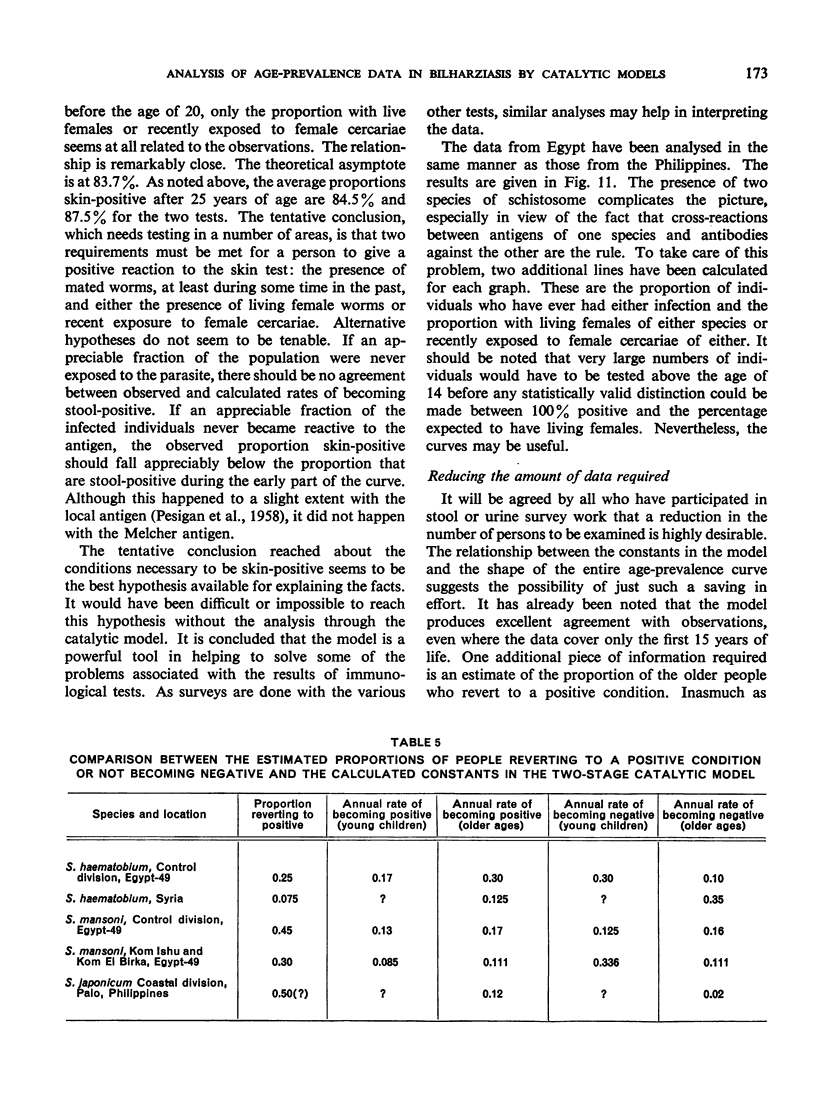
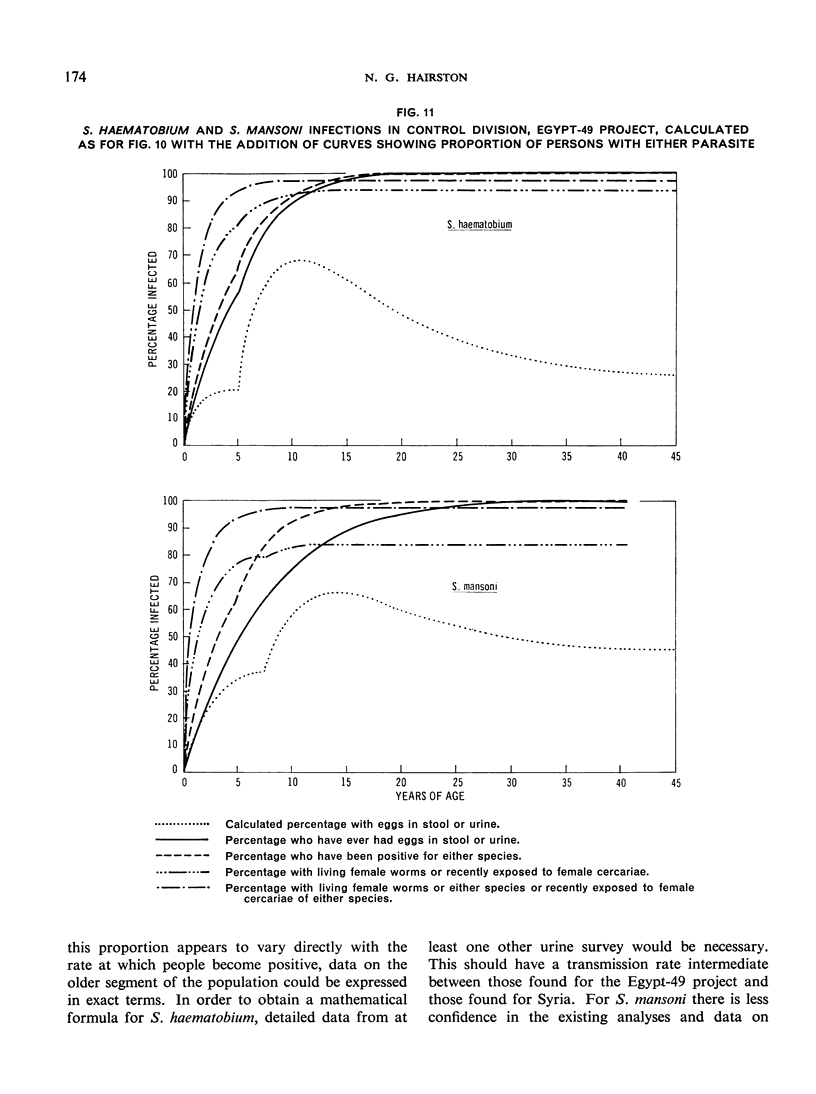

Selected References
These references are in PubMed. This may not be the complete list of references from this article.
- Hairston N. G. On the mathematical analysis of schistosome populations. Bull World Health Organ. 1965;33(1):45–62. [PMC free article] [PubMed] [Google Scholar]
- JACHOWSKI L. A., ANDERSON R. I. Evaluation of some laboratory procedures in diagnosing infections with Schistosoma mansoni. Bull World Health Organ. 1961;25:675–693. [PMC free article] [PubMed] [Google Scholar]
- KAGAN I. G., PELLEGRINO J. A critical review of immunological methods for the diagnosis of bilharziasis. Bull World Health Organ. 1961;25:611–674. [PMC free article] [PubMed] [Google Scholar]
- PESIGAN T. P., FAROOQ M., HAIRSTON N. G., JAUREGUI J. J., GARCIA E. G., SANTOS A. T., SANTOS B. C., BESA A. A. Studies on Schistosoma japonicum infection in the Philippines. 1. General considerations and epidemiology. Bull World Health Organ. 1958;18(3):345–455. [PMC free article] [PubMed] [Google Scholar]
- VOGEL H., MINNING W. Uber die erworbene Resistenz von Macacus rhesus gegenüber Schistosoma japonicum. Z Tropenmed Parasitol. 1953 Oct;4(4):418–505. [PubMed] [Google Scholar]


